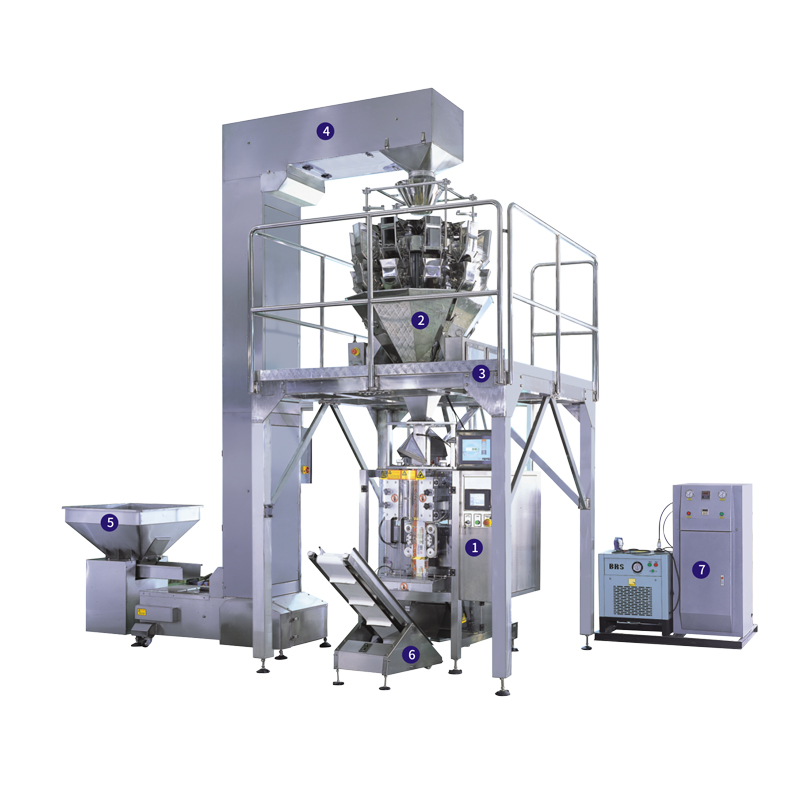What are the common faults of automatic packaging machines and their solutions?
2025-11-14
This issue is very practical and directly relates to the daily maintenance of the equipment and production efficiency. The common faults of automatic packaging machines mainly focus on four aspects: sealing, feeding, control systems and material form adaptation. The corresponding solutions are also relatively clear.
Sealing failure: The most significant issue affecting the sealing performance of packaging
Sealing failure is the most common problem with automatic packaging machines, mainly manifested as loose sealing, leakage of liquid or powder, and wrinkling or breaking at the sealing area.
Loose seal/Leakage: First check the heating temperature and pressure. If the temperature is too low, the film will not bond fully. The heating temperature can be gradually increased according to the type of packaging material (such as PE, composite film). If the pressure is insufficient, the air pressure of the sealing cylinder or the spring pressure should be adjusted to ensure that the upper and lower sealing molds fit tightly.
Sealing wrinkling/breaking: Focus on checking the heating temperature and film feeding speed. Excessively high temperatures will cause excessive melting of the film, and the temperature needs to be reduced. The mismatch between the film feeding speed and the heating speed can also cause wrinkling. The speed parameters can be fine-tuned synchronously to ensure that the film passes through the sealing mechanism at a uniform speed.
Offset of the sealing position: Check the film-guiding mechanism of the film. If the film guide roller is loose or misaligned, it will cause the film to deviate. The parallelism of the film guide roller needs to be recaliculated and the screws should be fixed with a wrench. At the same time, clean the dust or material residues on the surface of the film guide roller to prevent the film from slipping.
Feeding failure: It directly leads to inaccurate packaging measurement
Feeding faults can cause excessive, insufficient or interrupted materials in the package, which are commonly seen in packaging machines for granules and powders.
Large deviation in material measurement: First, check the sealing performance and parameters of the feeding mechanism. If it is screw feeding, it is necessary to check whether the screw blades are worn (wear will lead to a reduction in the feeding volume), and replace the blades if necessary. If it is vibrating feeding, the vibration frequency can be adjusted (if the frequency is too low, the feeding will be slow; if it is too high, material leakage is likely to occur), and the zero point of the load cell should be calibrated.
Feeding interruption/jamming: Focus on cleaning the feeding channel. If the material gets damp and lumps (such as powder) or contains impurities (such as foreign objects in the particles), it will block the channel. The machine needs to be stopped, the feeding pipe disassembled, and cleaned with compressed air or a brush. At the same time, check whether the valve under the hopper is stuck and ensure that the valve opens and closes smoothly.
Control System Failure: The main cause of equipment "malfunction"
Control system failures can lead to automatic packaging machine failure to start, parameter confusion or alarms, which are mostly related to circuits and sensors.
The device fails to start or shows no response: First, check the basic circuit. Check if the power switch has tripped and if the power cord is loose. If everything is normal, check the power supply status of the PLC controller or touch screen. If the indicator light of the controller does not light up, it may be that the internal fuse has blown, and a fuse of the same specification needs to be replaced (note to operate when the power is off).
Sensor alarm/false alarm: Clean and calibrate the sensor. Dust on the surface of photoelectric sensors (such as sensors with positioning films) can lead to misjudgment. Wipe them with a dry cloth. If the proximity sensor (such as for detecting whether the material is in place) is too far away, the installation position can be slightly adjusted to ensure that the sensing distance is within the specified range (usually 1-5mm).
Material Form Adaptation Failure: Common issues for special materials
For materials with strong stickiness (such as sauces), easy to fly (such as flour), or irregular shapes (such as block-shaped snacks), problems such as poor feeding and packaging deformation are likely to occur.
Blockage of viscous material discharge: Optimize the design of the discharge channel. Apply anti-stick coatings (such as Teflon) to the inner walls of the hopper, or install vibrators (low-frequency vibration to prevent material caking). If it is a filling type, a filling head with heating function can be selected (for example, the fluidity of the sauce increases after heating), and the residue on the filling port should be cleaned regularly.
Powder leakage/contamination of easily flying materials: Enhance sealing and dust removal. Install a sealed cover on the feeding channel and connect a negative pressure dust removal device (such as a small vacuum cleaner) at the same time to reduce the overflow of dust. When packaging, the mode of "vacuuming first and then sealing" can be adopted to prevent dust from being sealed into the packaging and causing contamination.
 English
English




